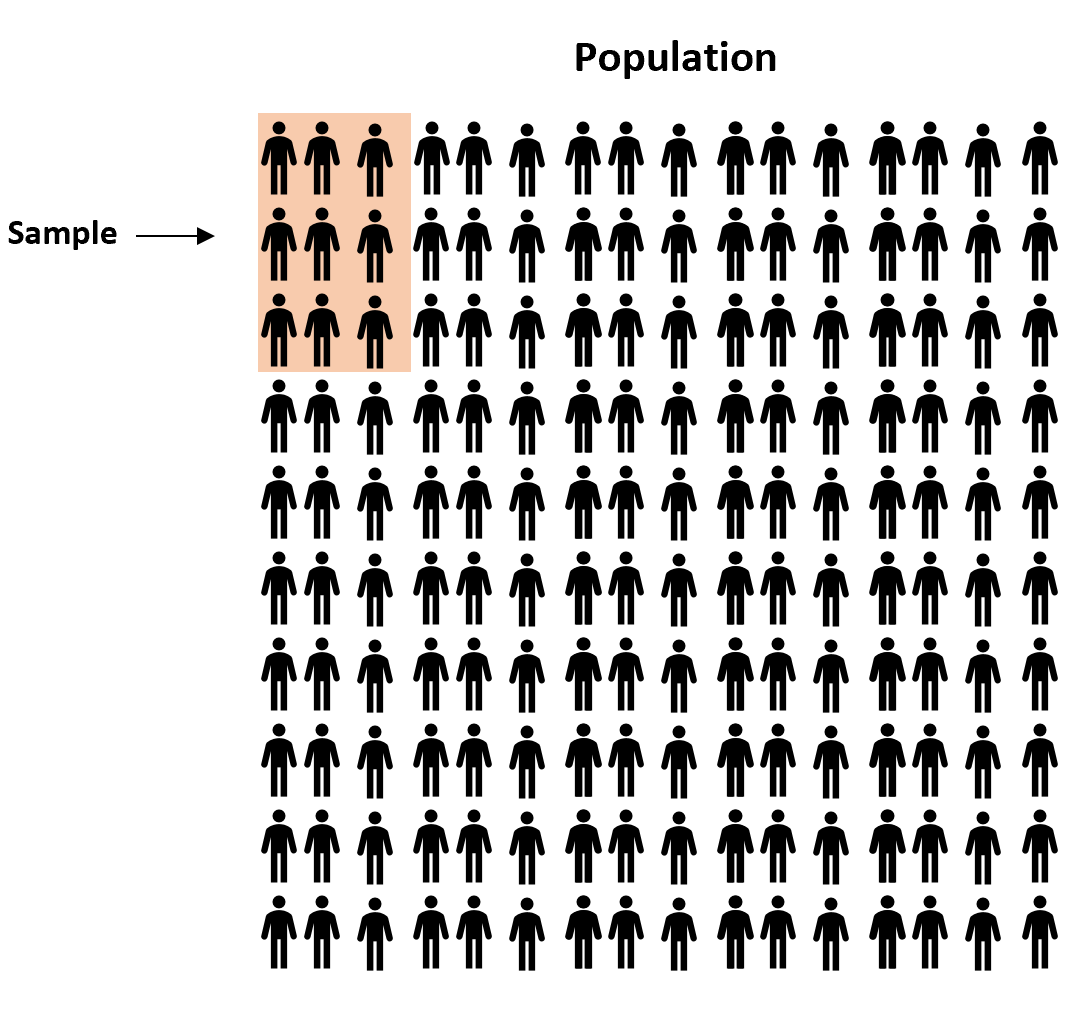The field of statistics is concerned with collecting, analyzing, interpreting, and presenting data.
In the field of research, statistics is important for the following reasons:
Reason 1: Statistics allows researchers to design studies such that the findings from the studies can be extrapolated to a larger population.
Reason 2: Statistics allows researchers to perform hypothesis tests to determine if some claim about a new drug, new procedure, new manufacturing method, etc. is true.
Reason 3: Statistics allows researchers to create confidence intervals to capture uncertainty around population estimates.
In the rest of this article, we elaborate on each of these reasons.
Reason 1: Statistics Allows Researchers to Design Studies
Researchers are often interested in answering questions about populations like:
- What is the average weight of a certain species of bird?
- What is the average height of a certain species of plant?
- What percentage of citizens in a certain city support a certain law?
One way to answer these questions is to go around and collect data on every single individual in the population of interest.
However, this is typically too costly and time-consuming which is why researchers instead take a sample of the population and use the data from the sample to draw conclusions about the population as a whole.
There are many different methods researchers can potentially use to obtain individuals to be in a sample. These are known as sampling methods.
There are two classes of sampling methods:
- Probability sampling methods: Every member in a population has an equal probability of being selected to be in the sample.
- Non-probability sampling methods: Not every member in a population has an equal probability of being selected to be in the sample.
By using probability sampling methods, researchers can maximize the chances that they obtain a sample that is representative of the overall population.
This allows researchers to extrapolate the findings from the sample to the overall population.
Read more about the two classes of sampling methods here.
Reason 2: Statistics Allows Researchers to Perform Hypothesis Tests
Another way that statistics is used in research is in the form of hypothesis tests.
These are tests that researchers can use to determine if there is a statistical significance between different medical procedures or treatments.
For example, suppose a scientist believes that a new drug is able to reduce blood pressure in obese patients. To test this, he measures the blood pressure of 30 patients before and after using the new drug for one month.
He then performs a paired samples t- test using the following hypotheses:
- H0: μafter = μbefore (the mean blood pressure is the same before and after using the drug)
- HA: μafter before (the mean blood pressure is less after using the drug)
If the p-value of the test is less than some significance level (e.g. α = .05), then he can reject the null hypothesis and conclude that the new drug leads to reduced blood pressure.
Note: This is just one example of a hypothesis test that is used in research. Other common tests include a one sample t-test, two sample t-test, one-way ANOVA, and two-way ANOVA.
Reason 3: Statistics Allows Researchers to Create Confidence Intervals
Another way that statistics is used in research is in the form of confidence intervals.
A confidence interval is a range of values that is likely to contain a population parameter with a certain level of confidence.
For example, suppose researchers are interested in estimating the mean weight of a certain species of turtle.
Instead of going around and weighing every single turtle in the population, researchers may instead take a simple random sample of turtles with the following information:
- Sample size n = 25
- Sample mean weight x = 300
- Sample standard deviation s = 18.5
Using the confidence interval for a mean formula, researchers may then construct the following 95% confidence interval:
95% Confidence Interval: 300 +/- 1.96*(18.5/√25) = [292.75, 307.25]
The researchers would then claim that they’re 95% confident that the true mean weight for this population of turtles is between 292.75 pounds and 307.25 pounds.
Additional Resources
The following articles explain the importance of statistics in other fields:
The Importance of Statistics in Healthcare
The Importance of Statistics in Nursing
The Importance of Statistics in Business
The Importance of Statistics in Economics
The Importance of Statistics in Education



